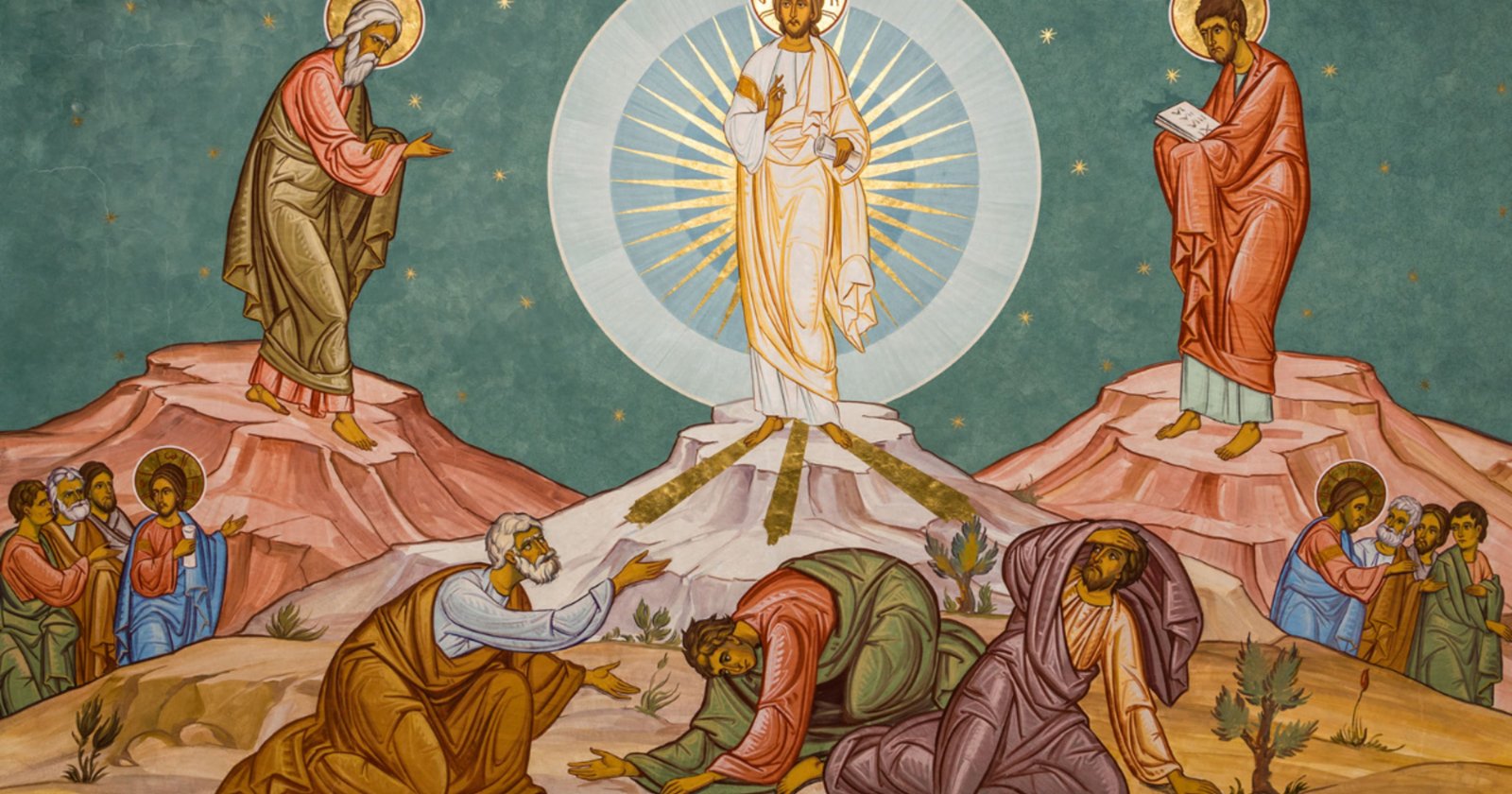The event known as the Transfiguration, as described in the New Testament of the Bible, is a significant moment in the life of Jesus. Peter may have perceived a connection to the observance of Israel’s Feast of Tabernacles, during which Jewish people constructed tents to commemorate God’s provision and anticipate the arrival of the kingdom. This interpretation appears to be a respectful reaction, but Peter erred by equating Jesus with Moses and Elijah.
It takes place on a high mountain; why did Peter want to build 3 tents on the Mount of Transfiguration where Jesus is transfigured, appearing in a radiant and glorified form, and is joined by two key figures from Jewish history, Moses and Elijah? During this extraordinary encounter, the disciple Peter suggests building three tents or shelters.
In this comprehensive guide, we will explore the Transfiguration event and delve into the possible reasons why Peter wanted to build three tents.
1. Introduction to the Transfiguration
The Transfiguration, as recorded in the Gospel accounts of Matthew 17:1-9, Mark 9:2-8, and Luke 9:28-36, why Peter wanted to build 3 tents on the mount of Transfiguration stands as a pivotal moment in the narrative of Jesus’ life and ministry.
This extraordinary event marks a significant turning point, serving as a celestial affirmation of Jesus’ identity as the Son of God. Amid the dazzling lights and illustrious figures of Jewish history, Peter, one of Jesus’ closest disciples, seemingly perplexed and entranced by the spectacle, proposes the construction of three tents.
This action, while puzzling at first glance, offers deep insights into Peter’s perception of the divine revelation unfolding before his eyes.
Defining the Transfiguration
- Explain the Transfiguration as an event in the life of Jesus when he is transformed into a radiant and divine form.
Biblical Context
- Provide the biblical context, mentioning that this event is described in the Gospels of Matthew, Mark, and Luke.

2. The Setting of the Transfiguration
Mount Tabor or Mount Hermon?
- Discuss the debate over the exact location of the Transfiguration, as some traditions place it on Mount Tabor while others suggest Mount Hermon.
The Chosen Mountain
- Emphasize the significance of a mountain setting, often associated with divine encounters in the Bible.
3. The Participants in the Transfiguration
The Transfiguration is an intimate event witnessed by three of Jesus’ closest disciples – Peter, James, and John.
In the midst of this scene, two significant figures from Jewish history, Moses, the law-giver, and Elijah, the prophet, appear alongside Jesus, engaging him in conversation. Their presence symbolizes the continuity of Jesus’ mission with the Law and the Prophets.
Jesus
- Describe Jesus’s role as the central figure in the Transfiguration, being transfigured into a radiant and divine form.
Moses and Elijah
- Introduce Moses and Elijah, two important figures from Jewish history who appear and converse with Jesus during the event.
4. Peter’s Reaction
In the Transfiguration narrative, Peter’s reaction is pivotal, revealing his understanding and interpretation of the divine spectacle. He proposes to construct three shelters, one each for Jesus, Moses, and Elijah.
His suggestion, while reflecting his reverential awe, also signifies his attempt to make sense of and respond appropriately to the unprecedented divine revelation unfolding before him. This act underscores Peter’s role as a devoted disciple, albeit one grappling with the profound complexity of Jesus’s true identity.
Peter’s Suggestion
- Explain Peter’s reaction to the extraordinary scene, suggesting the construction of three tents or shelters.
The Purpose of the Tents
- Delve into the possible reasons behind Peter’s suggestion, exploring the symbolic and practical aspects.

5. Interpretations of Peter’s Request
Symbolic Interpretation
- Discuss the symbolic interpretation of Peter’s suggestion, seeing the tents as a representation of sacred space or reverence.
Practical Interpretation
- Explain the practical interpretation of Peter’s suggestion, viewing the tents as a means of prolonging the divine encounter or providing shelter.
6. The Divine Voice
The Voice from the Cloud
- Describe the divine voice that speaks from a cloud, affirming Jesus as the beloved Son and urging the disciples to listen to him.
Obedience Over Construction
- Explain how the divine voice reinforces the significance of Jesus over the construction of tents.
7. Theological Significance
Prophetic Fulfillment
- Discuss the theological significance of the Transfiguration, including its connection to prophetic fulfillment and the presence of Moses and Elijah.
The Divine and Human Nature of Jesus
- Explain how the Transfiguration highlights both the divine and human nature of Jesus, offering a glimpse of his true identity.
Lessons from the Transfiguration
- Explore the lessons that can be drawn from the Transfiguration, such as the importance of faith, the transformational power of divine encounters, and the affirmation of Jesus’s divine identity.
Conclusion
The Transfiguration is a remarkable event in the life of Jesus, where he is transfigured into a radiant and divine form and converses with two significant figures from Jewish history, Moses and Elijah. During this encounter, why did Peter want to build 3 tents on the Mount of Transfiguration? Peter suggests building three tents, which can be interpreted both symbolically and practically. Symbolically, the tents may represent sacred space or reverence for the divine. Practically, they might indicate a desire to prolong the extraordinary experience or provide shelter. However, the divine voice from the cloud affirms the importance of Jesus and the need to listen to him, emphasizing obedience over construction. The Transfiguration holds deep theological significance, connecting to prophetic fulfillment and revealing the dual nature of Jesus as both divine and human. It stands as a pivotal moment in the life of Jesus and offers profound insights into his identity and mission. Peter’s suggestion to build three tents, while well-intentioned, serves as a reminder of the divine authority of Jesus and the significance of his message.
FAQs
What did Peter want to make on the mountain on which Jesus was transfigured?
Peter proposed building three tents or tabernacles on the Mount of Transfiguration – one each for Jesus, Moses, and Elijah. Why did Peter want to build 3 tents on the Mount of Transfiguration? This suggestion likely sprang from Peter’s awe at the momentous event, his wish to provide hospitality, or his desire to preserve this holy encounter. However, it also underscores the human struggle to comprehend the divine.
What did St Peter want to do at the Transfiguration?
St. Peter, overwhelmed by the divine revelation at the Transfiguration, expressed the desire to construct three tents. This proposal, despite its practical or symbolic implications, subtly reveals Peter’s struggle to fully grasp the divine nature of Jesus and the transformative spiritual experience. It also reflects our human tendency to try and contain or control profound spiritual moments rather than simply surrendering to the divine will.
Where in the Bible does it say let us build three tents?
The biblical reference to the construction of three tents can be found in the Gospel according to Mark, Chapter 9, Verse 5. During the Transfiguration, Peter is so moved by the divine presence of Jesus, Moses, and Elijah that he proposes, “Let us make three tents: one for you, one for Moses, and one for Elijah.” This verse underscores the transcendent and mysterious nature of the event.
Who suggested making three tents for Jesus, Moses, and Elijah?
The suggestion to build three tents for Jesus, Moses, and Elijah during the Transfiguration was made by Peter, one of Jesus’ closest disciples. Why did Peter want to build 3 tents on the Mount of Transfiguration? Peter’s proposition, recounted in Mark 9:5, is a testament to his awe and reverence in the face of the divine manifestation, yet also highlights the human struggle to contain and understand spiritual phenomena.































